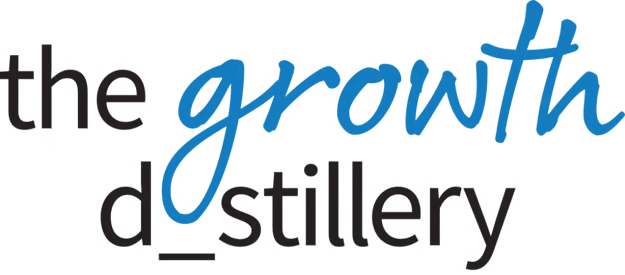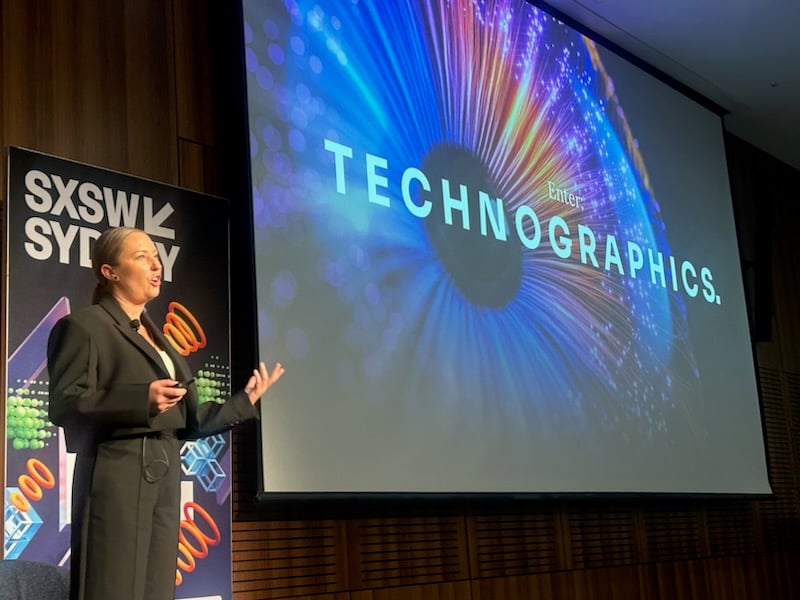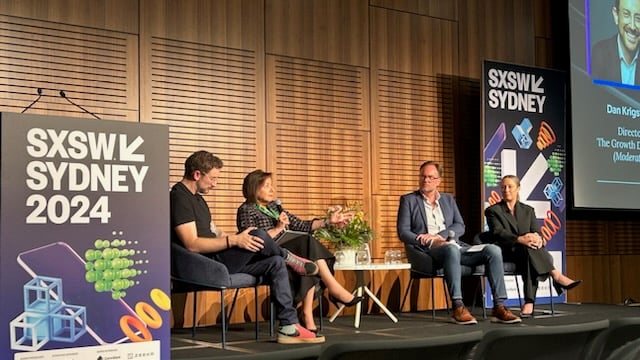News Corp Australia hosted a number of sessions at SXSW presented by The Growth Distillery. For marketers wanting to learn about the purchase habits of their customers, arguably none were more important than learning about how tech understanding can make an impact on purchasing habits of existing and potential customers.
The Tuesday late afternoon session was well attended as the audience heard about Technographics – The most influential view of your customers…that’s hiding in plain sight.
Hosting the session was Dan Krigstein, director of The Growth Intelligence Centre & The Growth Distillery. Krigstein has also been busy this week, also hosting a series of 11 podcasts for The Growth Distillery.
Co-presenting with Krigstein, was Rikki Pearce, managing director of Verve Australia.
This session introduced Technographics, a study on how Australians’ tech use influences their shopping choices. The word fuses technology and demographics.
The presentation showed how this new approach enhances the customer journey design and captures shopper value.
Technographics session summary
• Many people believe technology is a net negative for society; 75% fear scams or data leaks.
• There is a societal inability to disagree civilly, and technology intensifies this.
• Australia has the highest online shopping basket abandonment rate in the world at 81%.
• Consumer loyalty is declining due to uncontrollable circumstances.
• Marketing effectiveness is faltering, and consumers seek new influences and nudges to make purchases.
• A third renaissance of experience design is needed as traditional metrics (demographics, geolocation) fail to satisfy contemporary consumer expectations.
• Hidden cognitive friction such as unease and anxiety goes unaddressed despite technological advancements.
• Technographics are introduced as a method to bridge the gap and align with consumer desires better.

Krigstein noted “from the research that we’ve just done, we know that the majority of Australians, actually believe that technology is a net negative for our lives and our society.
“And then even more than that, 75% are scared that they’re going to get scammed or hacked, or their data’s going to be leaked online. We are also increasingly aware of the social and economic impacts of algorithms.”
Pearce added: “We talk to a lot of people, a lot of people in this line of work, and so many of them now believe that they are in the 80% who have lost the ability to disagree with each other, to seek out alternative perspectives and to disagree with, like civilly, and have a conversation.
“We’re seeing the symptoms of this tension between the amazing enabling capability of technology, but this growing weight of the risks that it has socially, emotionally, economically.”
Krigstein: “We have the highest shopping basket abandonment rate in the world. Up to 81% of all online shopping purchases are elbowed at some point in the journey. And if you think about that, how much of that decisions are made on the 19% that make it to the bottom of the funnel? We also know that loyalty is becoming much harder earned and harder retained. We see higher rates of brand experimentation and brand switching than we have ever seen in the last decade.”
Pearce: “We love new things and we’ve realised that the lazy tacks of sticking with a brand might not necessarily be paying off. The more sobering impact of this tension that’s playing out is that we are seeing marketing effectiveness fall off a cliff. This is not us saying it, this is not just from the work that we’ve done.
“Marketing effectiveness is starting to erode and erode quickly. At the same time, consumers are seeking new influences, new nudges to push them through that funnel.”
Krigstein: “We’ve spent 18 months looking at these two key ingredients for preference driving, influence and behavioural nudges, and we’ve seen a foundational shift in what influences Australians and the nudges that are going to push them into a state of active confidence to be able to get them to purchase.
“We continue to use technologically agnostic traits to architect almost the entirety of where and when brands show up. We use demographics, we use geolocation, we use things like affluence, gender, to decide what good looks like. And for some areas of the buying experience that holds water, but for many, and an increasingly large component of what good looks like, this just doesn’t hold true. And we’ve broadly ignored the hesitancy and the trust eroding in technology that Rikki spoke about earlier.
“Inadvertently, we’ve started to force customers down journeys that just don’t align with how they want to work with us, that doesn’t accommodate the increasing nuance in my technological posture, and increasingly don’t delight Australians. And so we thought to close this gap. These forces are already potent, and they’re only going to become more material over time. And that means that this gap is going to widen. Unless we integrate a new way to think about customers and design journeys that are made for them to delight them. Enter…Technographics.”
Toward the end of the session, the presenters were joined onstage by psychologist and author Amanda Gordon and Jason Davey from Ogilvy One.
Krigstein added they will soon have research on their website for a deeper dive.
Visit https://www.thegrowthdistillery.com.au/.

Rikki Pearce
In the meantime, the presenters summarised action points:
• Conduct further research to assess consumer beliefs about technology’s impact on society.
• Explore the causes of high online shopping basket abandonment and implement strategies to reduce it.
• Innovate new ways to foster brand loyalty despite external market pressures.
• Update marketing approaches to enhance effectiveness by integrating consumer influence trends and behavioural nudges.
• Redefine experience design paradigms to align with evolving consumer expectations and satisfaction metrics.
• Address cognitive friction by recognizing and mitigating consumer stress and anxiety with technology.
• Implement and integrate Technographics to better understand and cater to consumer needs.
